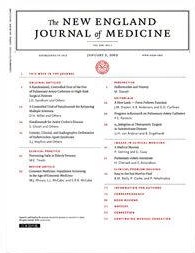
ARTHROPLASTY
TKR more effective than nonsurgical treatment for knee osteoarthritis over 12 months
This report has been verified
by one or more authors of the
original publication.
N Engl J Med. 2015 Oct 22;373(17):1597-606.
100 patients with radiographically confirmed moderate to severe knee osteoarthritis were randomized to receive either total knee replacement (TKR) followed by nonsurgical treatment or the same nonsurgical treatment alone. The purpose of the study was to compare pain, function and quality of life between the two groups to determine if greater results can be achieved when surgery is combined with nonsurgical treatment. The results demonstrated that the combination of TKR and nonsurgical interventions yielded greater improvements in pain, function and quality of life scores in 12 months. However, an increased rate of adverse events was observed in the TKR patients.
Unlock the full ACE Report
You have access to {0} free articles per month.Click below to unlock and view this {1}
Unlock NowCritical appraisals of the latest, high-impact randomized controlled trials and systematic reviews in orthopaedics
Access to OrthoEvidence podcast content, including collaborations with the Journal of Bone and Joint Surgery, interviews with internationally recognized surgeons, and roundtable discussions on orthopaedic news and topics
Subscription to The Pulse, a twice-weekly evidence-based newsletter designed to help you make better clinical decisions
Exclusive access to original content articles, including in-house systematic reviews, and articles on health research methods and hot orthopaedic topics
Or upgrade today and gain access to all OrthoEvidence content for just $1.99 per week.
Already have an account? Log in


Subscribe to "The Pulse"
Evidence-Based Orthopaedics direct to your inbox.
{0} of {1} free articles
Become an OrthoEvidence Premium Member. Expand your perspective with high-quality evidence.
Upgrade Now













































































